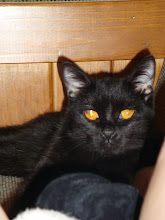Today we went to some of the catacombs. I figured I would start by explaining the history of the catacombs so you can understand the full beauty of them. The catacombs are basically underground cemeteries used by early Christians. In the Roman world before Christianity the pagans (non-Christians) would cremate their dead and place the ashes in urns (or possibly scatter them somewhere). However, early Christians believed in the imminent return of Christ to the earth. When Christ returned the dead would rise again (this is called bodily resurrection). Therefore, the Christians would not cremate their dead in order to preserve the body for Christ's return.
The catacombs were called dormitories (vs. crematories) because Christians used the euphemism "sleep" to talk about death. The higher levels are actually the oldest levels because at they filled up the space, they had to move lower in order to create more space. It is an urban legend that Christians hid out/lived down there. They also probably did not worship down there. This is because the Roman government knew about the catacombs, therefore, there was no place to hide. Most of the catacombs were only rediscovered a few hundred years ago. (This is because Constantine had churches built over the catacombs).
The catacombs were a popular place to bury martyrs. From there, Christians would want to have their families and themselves buried near these martyrs. Early Christians would celebrate the death day of martyrs (but they called it their birth day and would have a feast (more like a picnic) over the catacombs. This is the beginning of feast days for martyrs.
There were 3 different types of "graves", the first being a long thin hole that is closed off by tile, bricks, or marble. These holes are close together like bunks in a submarine. The second type is a family tomb which has an arch on the top and either sarcophagi or holes within the tomb. Then there were sarcophagi that were placed in larger rooms for the more wealthy. These tomb rooms there are some of the earliest depictions of Christian symbols and Biblical artwork. Some of these symbols are the fish, the olive branch, the peacock (a symbol of life), the good shepherd (Jesus with a sheep on his shoulder), and the Iota Xi Theta Upsilon Sigma. There are also biblical depictions of Madonna and Child, the raising of Lazarus, the fiery furnace, Jonah and the whale, etc.
The first catacomb we saw was the Catacomb of Saint Priscilla on the northern side of Rome. In this catacomb was the first painting of Madonna and Child. Also it was the only other place in Rome to have a phoenix as a Christian symbol.
The second catacomb we saw was the Catacomb of Saint Callisto which was the largest of all of the catacombs with about half a million people buried there. Also, there are 13 miles of tunnels in that catacomb. There is a hall of bishops which had 9 bishops buried there.
The last catacomb we saw was the Catacomb of Saint Sebastian. This catacomb was most likely the original burial place of Peter and Paul. The catacomb had 3 room-like areas that show the transition from crematoriums to cemeteries; there were urns filled with ashes that were buried in the catacombs. Above this catacomb is the church of Saint Sebastian which has probably the last Bernini sculpture (the Bust of Jesus). It also has the original stone believed to have the footprints of Jesus. These footprints were from when Jesus appeared to Peter on the Appian Way heading outside of Rome. Peter saw Jesus and asked "Quo Vadis?" or Where are you going? And Jesus told Peter that he was going to Rome to be crucified again. Then Peter went into the city because he understood that it was his time to die. Peter was then crucified upside down. The Quo Vadis church (which we visited later and which is on the site of this revelation) has a replica of this stone in the floor of the church.
From the Quo Vadis church we went to the English speaking Methodist church and discussed their ministry and the Catholic and Methodist relations in Rome. The Reverend Dr. Trevor (last name being withheld) has a very interesting story that I wish I had more time to go into but I do not… sorry! From there we made our way back to the hotel after stopping for a snack/dinner by the Pantheon.
Subscribe to:
Post Comments (Atom)



No comments:
Post a Comment